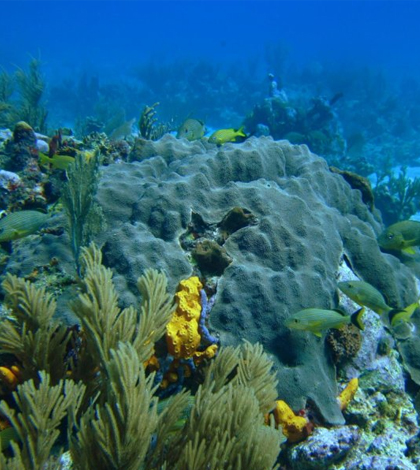Coral With Higher Fat Reserves More Likely To Survive Bleaching

Orbicella faveolata, also known as boulder coral or mountainous coral, in the Caribbean coral reef. (Credit: Verena Schoepf / University of Western Australia)
As temperatures increase and bleaching events are on the rise, researchers are attempting to determine what coral characteristics might help the sensitive animals survive in warmer oceans. According to a release from Ohio State University, a coral’s fat content is a key component to its survival in conditions of increased temperature stress.
Researchers found a direct correlation between the typical fat content of a species and whether it was able to survive and thrive after a bleaching event. Bleaching events result from environmental stress on corals, which cause them to release symbiotic algae that produce energy, causing color loss and sometimes death.
Researchers tested three coral types: finger coral, boulder coral and Mustard hill coral. Finger coral stored the most fat; boulder coral had an intermediate fat amount; and Mustard hill coral had the least. After two experimental cycles of bleaching, it was found that finger coral recovered the best; boulder coral somewhat less well; and Mustard hill seemed to be the least resilient.
Top image: Orbicella faveolata, also known as boulder coral or mountainous coral, in the Caribbean coral reef. (Credit: Verena Schoepf / University of Western Australia)




0 comments